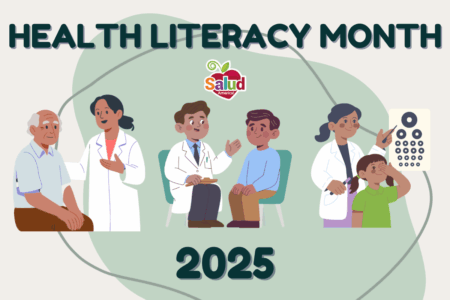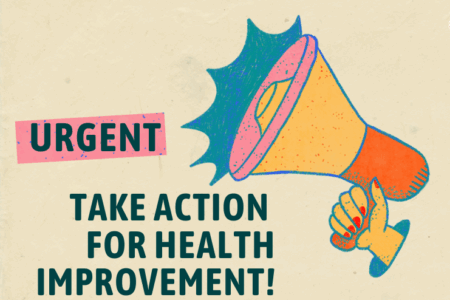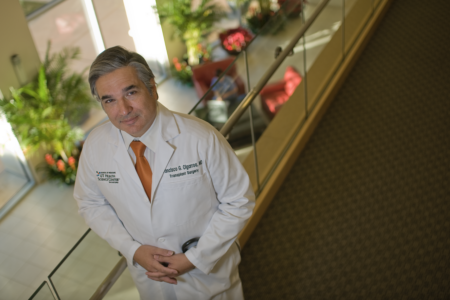
Share On Social!
Did you know that our health is influenced by many non-medical factors?
That’s right. The conditions in which we are born, grow, live, work, and age – known as non-medical drivers of health – can greatly help or harm our health.
As a result, more healthcare facilities are screening patients for non-medical drivers of health through written questionnaires or verbal questions.
Screenings can cover a variety of topics, such as mental and financial health and access to healthy food, transportation, and affordable medication.
Non-medical drivers of health screenings can help medical providers better understand and address patients’ social needs, which can be beneficial for overlooked patients who face health differences, such as Latinos.
If patients screen positive for social needs, providers can connect them to resources that can help. These resources are usually associated with the local community.
Therefore, a successful non-medical drivers of health screening program does more than just gather information from patients. The program must connect patients with community-based organizations to address the root cause of their social needs, which may require time, financial investment, and community engagement.
Here’s some important factors to consider when designing and implementing your own non-medical drivers of health screening program, according to the Center for Health Care Strategies (CHCS).
Non-Medical Drivers of Health Screening: Capacity to Address Patients’ Social Needs
Think: time and money.
Do you have the equipment necessary to conduct non-medical drivers of health screenings?

If you prefer to conduct screenings on electronic equipment, you may need to consider the cost of computers/tablets, software, or system upgrades.
Conducting screenings on pen and paper could save you money until you’re ready to implement an electronic system.
Can you adequately train staff to conduct screenings and connect patients to community-based organizations?
This task may take time and require hiring training professionals.
“Care team members who have not been adequately trained on how to discuss non-medical drivers of health with patients may feel uncomfortable asking personal questions that expose challenges such as housing instability, domestic violence, or financial insecurity,” according to CHCS.
“Training care team members in techniques such as motivational interviewing and health coaching can help empower staff and build confidence.”
Non-Medical Drivers of Health Screening: Availability of Resources
What community-based organizations should you connect with for your referral network?
As noted above, a successful non-medical drivers of health screening program does more than just gather information from patients. Screening programs must establish connections with community-based organizations that can help address patients’ social needs.
Community organizations you may connect with should reflect the patient population’s most urgent needs.
Therefore, food banks, homeless shelters, and transportation agencies may be of most importance. Local gyms, faith-based organizations, and community centers may also be beneficial to your patient population.
How might you close the “referral loop” (what happens to the patient after referral)?
Addressing this concern may require significant coordination and communication with community partners. You may establish a team dedicated to following up with patients and community-based organizations.
“Many healthcare organizations lack a formal inventory of a community’s available resources to address [non-medical drivers of health], as well as a standard process for tracking what happens after referrals,” according to CHCS. “Often there is a lack of coordination between a community’s social service organizations and healthcare providers, many of which serve the same clients.”
Non-Medical Drivers of Health Screenings: Ease of Use in Clinical Setting
What practices might have to change for screening to become part of your facility’s workflow?
Once you have considered the necessary equipment, personnel, and community connections, you should reflect on how to incorporate non-medical drivers of health screenings into your facility’s everyday routine.
For instance, where will the screening take place? In the exam room? A doctor’s private office? Another private space designated for screening patients?
 Considering the personal nature of some screening questions, patients may appreciate some privacy. Or some patients may appreciate talking through the questions.
Considering the personal nature of some screening questions, patients may appreciate some privacy. Or some patients may appreciate talking through the questions.
You should also think about what healthcare professionals in your clinical setting are best suited to conduct screenings, and what their availability looks like.
“Because of their lived experience and unique understanding of the communities they serve, community health workers are well positioned to speak with patients about the social challenges they face,” according to CHCS.
“In addition, care team members who conduct home visits (e.g., nurses, community paramedics, peers) have the innate ability to address patients’ social needs due to their experiences, on the ground training, and ‘window of opportunity’ to observe patients in their natural home environment. Finally, clinical social workers, who have substantial background in the impact of social needs on general health, and receive training in making referrals to social services, might also be considered for administering a [non-medical drivers of health] tool.”
Non-Medical Drivers of Health Screening: Capturing Patient Needs
What social needs might you include in your screening tool?
Just as you would when choosing community-based organizations to connect with, you should consider your patients’ most urgent needs.

Are patients living in poverty? Do they have trouble putting food on the table? Are they housing cost-burdened?
You may engage community leaders, such as church, school, and community center personnel, to determine the answers to these questions. Additionally, you can reach out to your local public health office.
Will you create your own non-medical drivers of health screening tool or use an existing one?
Salud America! has put together two lists of non-medical drivers of health screening tools you may find helpful.
Most screening tools are available for download. You can use these screening tools as is or use them as inspiration to create your own based on patient needs.
3 Tools to Screen for Non-Medical Drivers of Health
3 More Amazing Non-Medical Drivers of Health Screening Tools
Also, CHCS offers screening tools and more considerations on their website.
The American Hospital Association also offers a variety of resources, including a podcast and adaptable presentation slides, to guide healthcare facilities in adopting and engaging patients in non-medical drivers of health screening.
Why Screen for Non-Medical Drivers of Health?
Studies show that non-medical drivers of health accounts for between 30-55% of health outcomes and influences individual health behaviors, which account for another 30% of health outcomes.
When patients have unmet social needs, they “are more likely to have difficulties self-managing chronic health conditions, have repeat ‘no-shows’ to medical appointments, and be frequent emergency department users,” according to CHCS.
Fortunately, when patients are screened for social needs at their medical appointments, healthcare providers can identify ways to address those needs and their root causes, ultimately improving health outcomes and reducing healthcare costs.
How Can You Shape Local Non-Medical Drivers of Health?
Select your county and get a Health Report Card by Salud America! at UT Health San Antonio.
In your Health Report Card, you will see maps, data, and gauges to compare non-medical drivers of health and public health issues to the rest of your state and nation.
You can email your Health Report Card to local leaders to stimulate community change.
You can also use the data in your materials or share on social media to raise awareness about the importance of non-medical drivers of health screening.
Explore More:
HealthBy The Numbers
1
out of 10
Pedestrians survive when hit by a car at 40 MPH




… [Trackback]
[…] Read More: salud-america.org/dr-francisco-g-cigarroa-the-first-latino-chancellor-of-the-university-of-texas-system/ […]